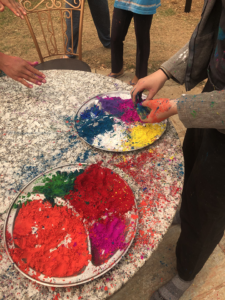 With gap years on the rise, and people becoming comfortable traveling across borders again, it’s time to seriously think about the way we traveled in the past, and how we want travel to look like today and in the future. The global pandemic has given travel a new platform. There has been an opportunity, just like every other industry and system within our world, for the people to re-evaluate our actions and ideas around travel. We can either treat this time as a reset, a chance to be better, or stick to old practices, which could compromise the future of travel and our world.
With gap years on the rise, and people becoming comfortable traveling across borders again, it’s time to seriously think about the way we traveled in the past, and how we want travel to look like today and in the future. The global pandemic has given travel a new platform. There has been an opportunity, just like every other industry and system within our world, for the people to re-evaluate our actions and ideas around travel. We can either treat this time as a reset, a chance to be better, or stick to old practices, which could compromise the future of travel and our world.
If you’ve been fortunate to travel within the past two years, you will have noticed that travel looks and feels different. Especially if you’ve taken a plane to your destination. PCR tests, vaccine status, masks, and constant sanitizing are now extra things we have on our minds as we plan and enjoy our travels. Not to mention saving some extra room in the budget, and schedule, just in case you are the unlucky person to find themselves with Covid while abroad.
In the early months of the pandemic I sat at home contemplating travel. I had rushed back home on March 14th from my school trip to Costa Rica. I remember this day clearly, because it was the day a global pandemic was declared and I had felt lucky to make it home before the borders closed. With plans out the window, as I had planned an epic backpacking trip from Costa Rica all the way throughout South America, I was disappointed, yet hopeful that the pandemic wouldn’t last long, and better yet, hopeful and grateful that I had the time to create ideas around the future of travel. At that time I was making content on Instagram to help spread these ideas.
In June 2020 I met my good friend Julia through Instagram. We both shared alternative ways of travel on our pages, so naturally we connected over our shared values. Julia and I saw the need for travel to change, which made collaborating easy. Julia is the creator of a podcast, and platform, called GenNomadic. She created the community for the next generation of travelers to learn and ponder travel. I have learned a lot from her podcast. You can follow Julia and learn from her too @generation.nomad on Instagram. You’ll even hear from GYA staff as well as GYA Accredited Program staff interviewed on the podcast.
We both agreed that travel can be very beneficial to individual travelers. On the flip side, we wondered if the locals in popular travel destinations benefit from their presence. Julia and I had both witnessed white and western entitlement attitudes, which at a core felt wrong. We were both concerned about over tourism, white savior complex in voluntourism, and the environmental and economic impacts of travel. We hoped that we could find a way to make travel beneficial to locals as well as the travelers.
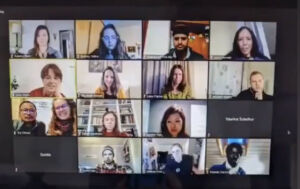 Through virtual conversations and presentations we helped create the Travel Reset Movement, which spread the word: The time is now to change the way we travel! We held open spaces to talk about issues and how we as individuals could use our actions and choices for change. It was beautiful to have voices from all over the world, including India, Europe, the US, Australia, Ethiopia, just to name a few. As a group we tackled conversations about climate change, privilege, volunteering abroad, travel based education, and new best practices. While I still care deeply about the issues that TRM discussed, the organization has been taking a break for reflection.
Through virtual conversations and presentations we helped create the Travel Reset Movement, which spread the word: The time is now to change the way we travel! We held open spaces to talk about issues and how we as individuals could use our actions and choices for change. It was beautiful to have voices from all over the world, including India, Europe, the US, Australia, Ethiopia, just to name a few. As a group we tackled conversations about climate change, privilege, volunteering abroad, travel based education, and new best practices. While I still care deeply about the issues that TRM discussed, the organization has been taking a break for reflection.
In March 2021, my Julia and I set out on a research trip to Nepal. Our goals were to learn about how a country that relies heavily on the tourism industry was dealing with the pandemic, and what the realities of traveling during a pandemic looked like. And while we left with more questions than answers, we learned more about the realities that Nepal faces.
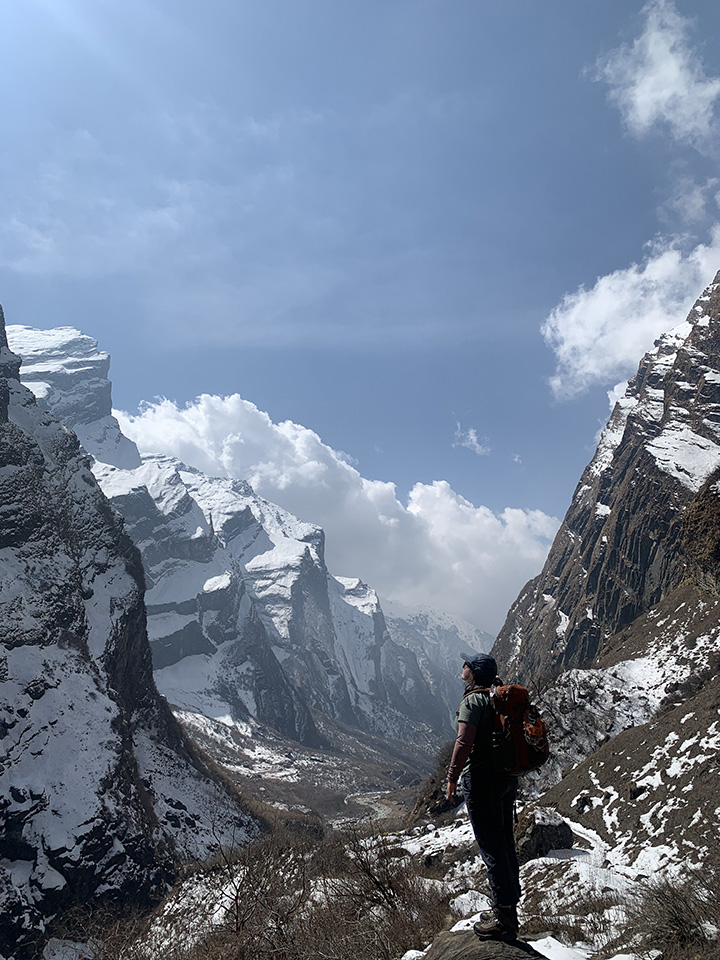
Nepal opened my eyes to the realities of the travel industry. According to Nepali Times, the travel industry makes up 8% of the country’s GDP. Walking around Kathmandu it is apparent that travel runs through the veins of the city. Thamel, a zone within the central part of the city, is full of shops catering to tourists, trekking companies, and is the place to find nightlife and a traveler’s dream hostel. The city was fast paced, and I was extremely surprised to learn that I was one of less than 100 western tourists around. I can’t begin to imagine what the city would have been like before the pandemic.
Julia and I were able to partake in a trek to Annapurna Base Camp, giving us an inside glimpse on a local travel company. We were able to ask the very pressing question: how was Nepal dealing with the pandemic when it comes to tourism?
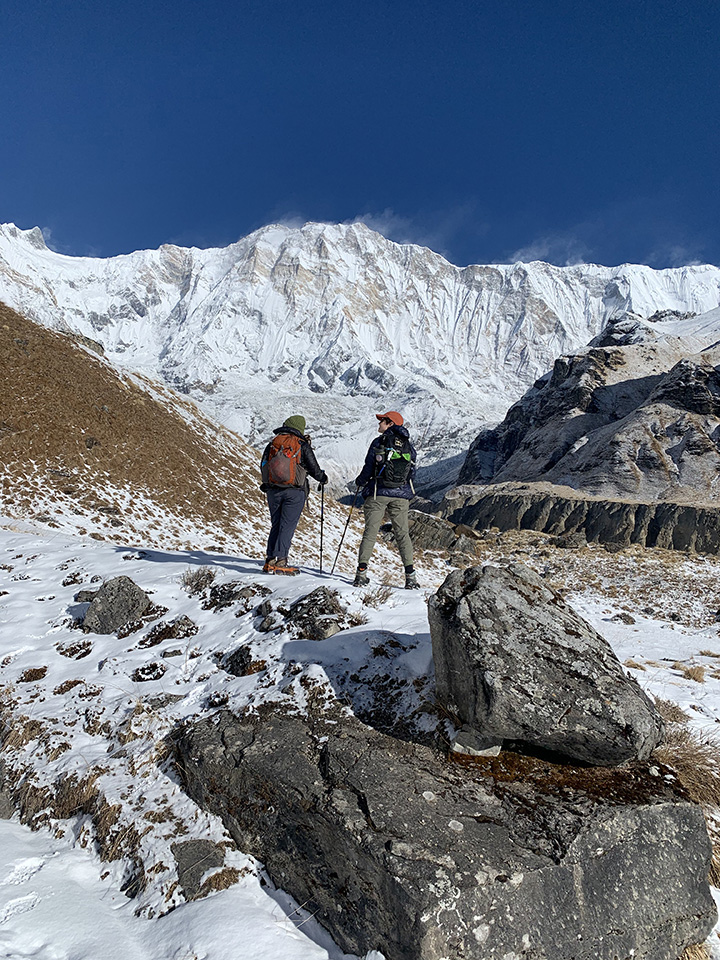
The answer was actually quite complex. Guides and porters, the people who take travelers on treks and carry their stuff, were without work for months. According to Raj, the owner and founder of the trekking company we went with, people were able to turn back into their own communities and work on personal projects. Raj claimed that this was a good thing. Our guide though said while it was nice being able to be with family, he lost good work and his living. Additionally, walking around Thamel, we spoke to business owners who wished tourists would return so they could make a living again.
From talking to local business owners and guides we learned that tourism being at an all time low was bitter sweet. Many shops rely on selling their goods to tourists to make an income. Some people we talked to claimed that it felt like a breath of fresh air to have a break from entitled westerners. While there were mixed feelings about travelers, it seemed that a majority of the people we talked to wanted travelers to come back, because it was easy money.
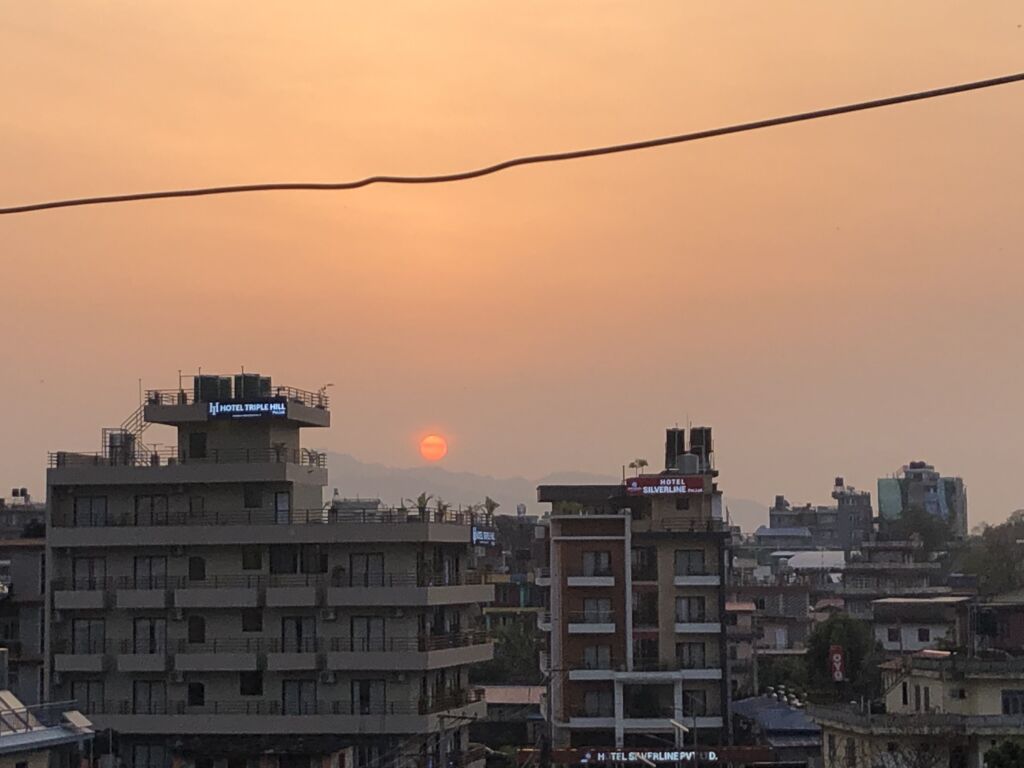
The realities of traveling during a pandemic seem obvious, but it’s not real until it happens.
- Flights can get canceled. The first leg of the flight to Nepal included a layover in India. While the rules at the time were unclear, both Julia and I had spent every day leading up to our trip calling the airline checking and double checking our flight status. It wasn’t until the day of that I was refused boarding. Julia and I had to quickly adapt to the situation at hand.
- Quarantine sucks. Many countries continue to require the traveler to quarantine for a certain amount of days before they can explore. Some places help out with food and basic needs, others not so much, which can be difficult. Travelers must take a PCR test as well and wait for results.
- If you are a traveler who likes to participate in night life, be prepared for limited options or not to participate at all, unless you’re willing to risk getting Covid.
- Just because you wear a mask doesn’t mean others will. In Nepal hardly anyone was wearing a mask. This was a bit confusing at first, but I ended up learning that Nepal had very few cases overall. While it made a bit more sense to not see locals wearing masks, my blood boiled as I saw other westerners walking around without one.
- Just because you’re on vacation doesn’t mean Covid is. Anybody is at risk anywhere and if you plan to travel I want to advise making a plan in case you get that positive test result. A plan can include having a budget for quarantine. Most people have to stay in a designated quarantine hotel determined by the country. Additionally, many countries are requiring Covid insurance. I’ve found that many travel insurance companies are now offering a Covid insurance plan. Plus thinking ahead about timing and how this bump in the travel road will affect you traveling or going home. One more thing that I think is important to think about is recovery time. Even after the virus has left the body, and I’m saying this from personal experience, it can take a long time to recover physically and mentally.
- Boarders can close again. Julia and I entered Nepal soon after the country opened their borders to select travelers. As I left the country, nearly 6 weeks later Nepal closed the borders again and reentered a stay at home order lockdown.
Sustainable & Holistic Travel
Lessons Learned Through Experience
While it’s exciting to see the world open up again, it’s important to not rush back into travel too naively. While keeping the realities of travel during a pandemic in mind, I also want to ask young travelers especially, to start to rethink the way they travel.
Remember earlier when I mentioned all the time I spent early on in the pandemic thinking about the way we travel? Many of the ideas I had were about traveling sustainably and holistically.
Here are some definitions:
Sustainability is a word that has been floating around A LOT recently. Sustainability means being able to meet our own needs without compromising the needs of others, and future generations. In the context of sustainable travel, this would mean traveling using actions that will enable future travelers. I like to travel slowly, which means staying in one place for a longer period of time, rather than rushing off to the next place. I avoid tourist hot spots, and I don’t take a lot of flights, which reduces my environmental impact on a place.
Holistic travel involves the practice of analyzing all the parts that interconnect in travel. This can involve a traveler’s mindset, actions and attitude, the economy, history and cultures of a place, and the list goes on.
Sustainable travel can look different for everyone. It can be spending their time at eco-hotels, vetting resorts or companies for green washing and animal welfare laws, supporting local shops and restaurants, or avoiding the popular places altogether. One of my favorite ways to promote sustainable travel is simply in the way we pack. I want to share my eco-friendly packing list, because I believe it can be accessible to many people and sustainable habits start with simple actions.
My eco-friendly packing list:
- Bamboo toothbrush & toothpaste tabs
- Shampoo bar and conditioner
- Reusable water bottle & filter
- Reef safe sunscreen
- Plastic free deodorant
- A cloth bag
- Reusable utensils & straw
- Reusable menstruation care, such as a cup, period underwear, and reusable pads
- Versatile clothing
- At least 1 food storage container
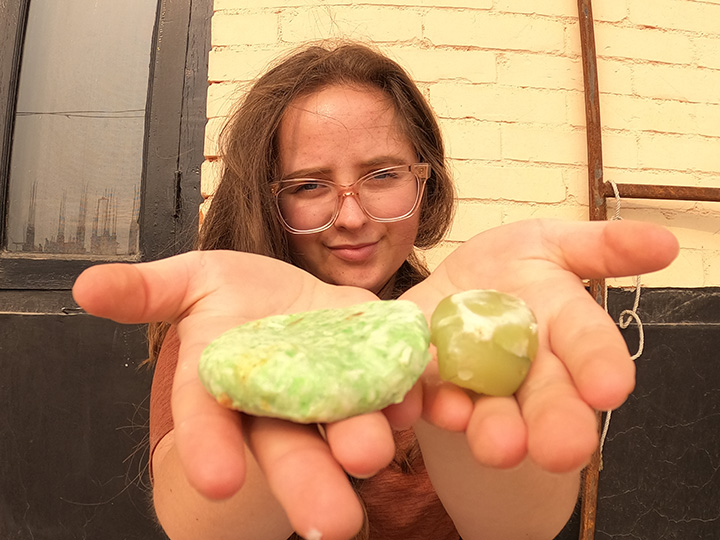
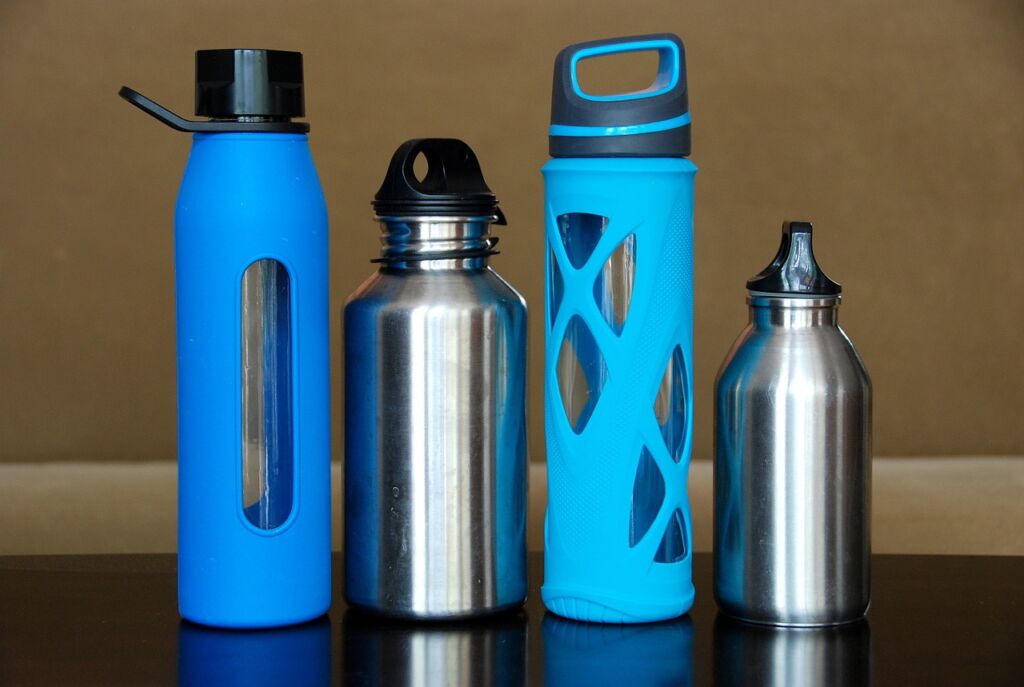
Components of Holistic Travel
Holistic travel was something I came up with when I was thinking more about how travel was a transformative experience for the individual. Below I have outlined some areas you as a traveler can take actions on before, during and after your travels.
Mindset: Have a positive and growth mindset as you travel. Be open to anything that happens, whether it’s positive or negative. This will allow you to learn from the experience no matter what.
Awareness: Remember that you are inviting yourself into the space and location of people’s lives. Be aware of how you act towards people, do not be rude or demanding, for this creates a bad relationship with other tourists. Be open to learning about the people, history, culture, and religions, even if you don’t agree with them. Remember that you came to them, not the other way around. Simply be kind. To be aware while traveling also means to fully enjoy the moment and be aware of yourself so that you can get the most out of your experience.
Self: Take care of yourself. Before you travel, know what you need or want to get out of your trip. Don’t put your needs at the bottom of your list either, because you don’t want to get sick! Be aware of your personal belongings and how you feel, and if you feel safe or not.
Sustainability: Become aware of how traveling impacts the environment, and then find ways to offset your footprint. Think about if you need to fly to your destination or if you have other options such as driving, busing, or taking a train. If these are not an option, do not despair. Here are some other ways you can practice sustainable habits: You can take shorter showers, eat less meat, especially beef, you can bike and walk more. On the go you can make sure you’re using sustainable products, such as a metal water bottle, metal straws, thrifted gear, bar soaps, and your own cutlery. You can plant trees, support travel companies that are making a positive impact, support the local economy, and practice slow travel.
Holding space and being empathetic: Listen and learn as much as you can when you travel. Be open to new ideas and perspectives. Immerse yourself as much as you can. Be intentional and purposeful with each thing you do. Be patient with people. Meet locals and other travelers to build deeper connections and find out how you can make a positive impact in your destination.
A Transformative Journey
As you travel, and when you arrive back home, take time to reflect. Have you experienced personal growth on your trip? Have you been able to learn something new that encourages more learning action? Are there new habits you have learned that you want to keep, or old ones you want to get rid of? How can you keep learning or make a change in your local community? Has your trip changed you in any way?
Come back and share all that you have learned and experienced! Share the beauty, the good parts and the bad parts. Share your lessons. Do this to encourage and inspire others to travel and practice holistic travel. Use your trip, as a whole and after, to promote love and unity around the world. Don’t come home just to go back to how your life was before you went on your trip.
The world has changed and I hope that when you go back out there you don’t expect it to be the same. Whether you are traveling for the first time on the 19th time, I believe that you have the power to make a positive impact by using the simple tools and realizations I’ve been able to share with you.
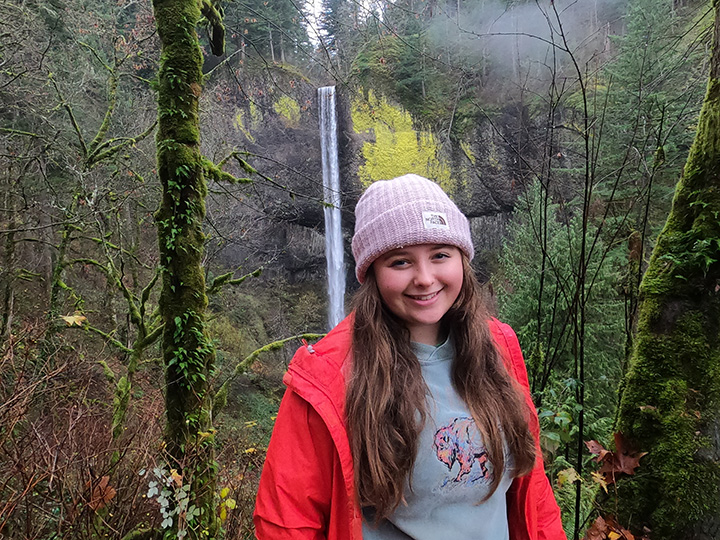
Sydney is always on the go. Whether it’s traveling to new places, or working out in the field you will most likely find her surrounded by mountains, forests, or near the ocean.
She is an outdoor educator and guide for middle and high schoolers, as well as a passionate volunteer for the Aloha Animal Sanctuary and the Oregon Chapter Sierra Club. She has grown up learning about stewardship with the land and she wants to share that with other people. Sydney loves to swim, hike, climb, and camp. She also likes to cook, and has an Instagram for cooking healthy and easy meals on the go @eat.easy.plants; and she also enjoys painting, writing, and photography. Connect with her on Instagram @star.heart.traveler.
Categories
- Advising (7)
- Alumni (2)
- Career (4)
- College & University (15)
- Communication (17)
- DEIA (4)
- Fair Trade Learning (3)
- Finances (12)
- Gap Year Benefits (67)
- Growth & Development (6)
- Leadership (5)
- Learning & Reflection (54)
- Mental Health (4)
- Planning (59)
- Professional Development (4)
- Research (4)
- Risk Management (3)
- Safety (5)
- Service-Learning (10)
- Standards & Accreditation (1)
- Sustainability (6)
- Voices Project (20)
